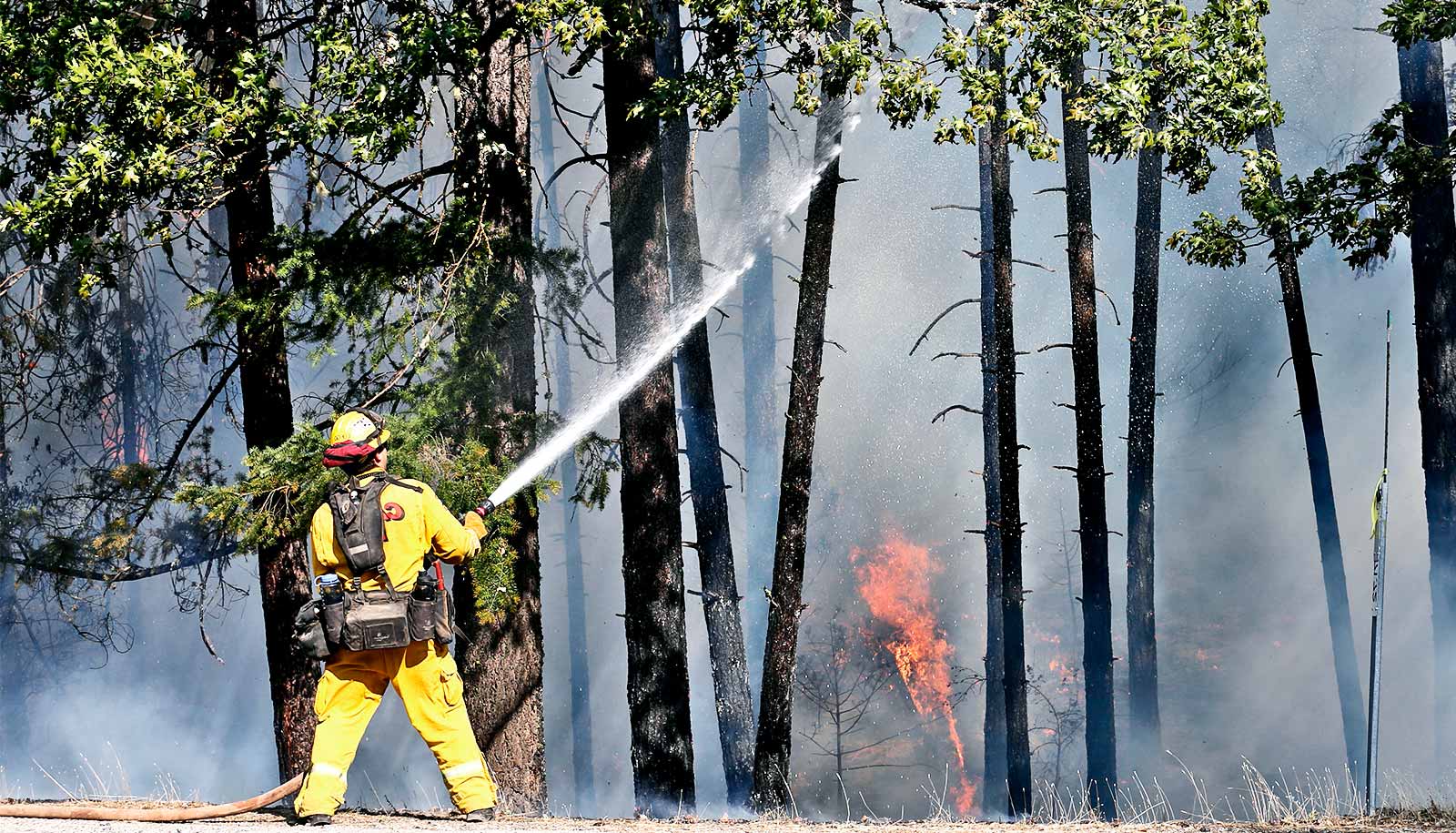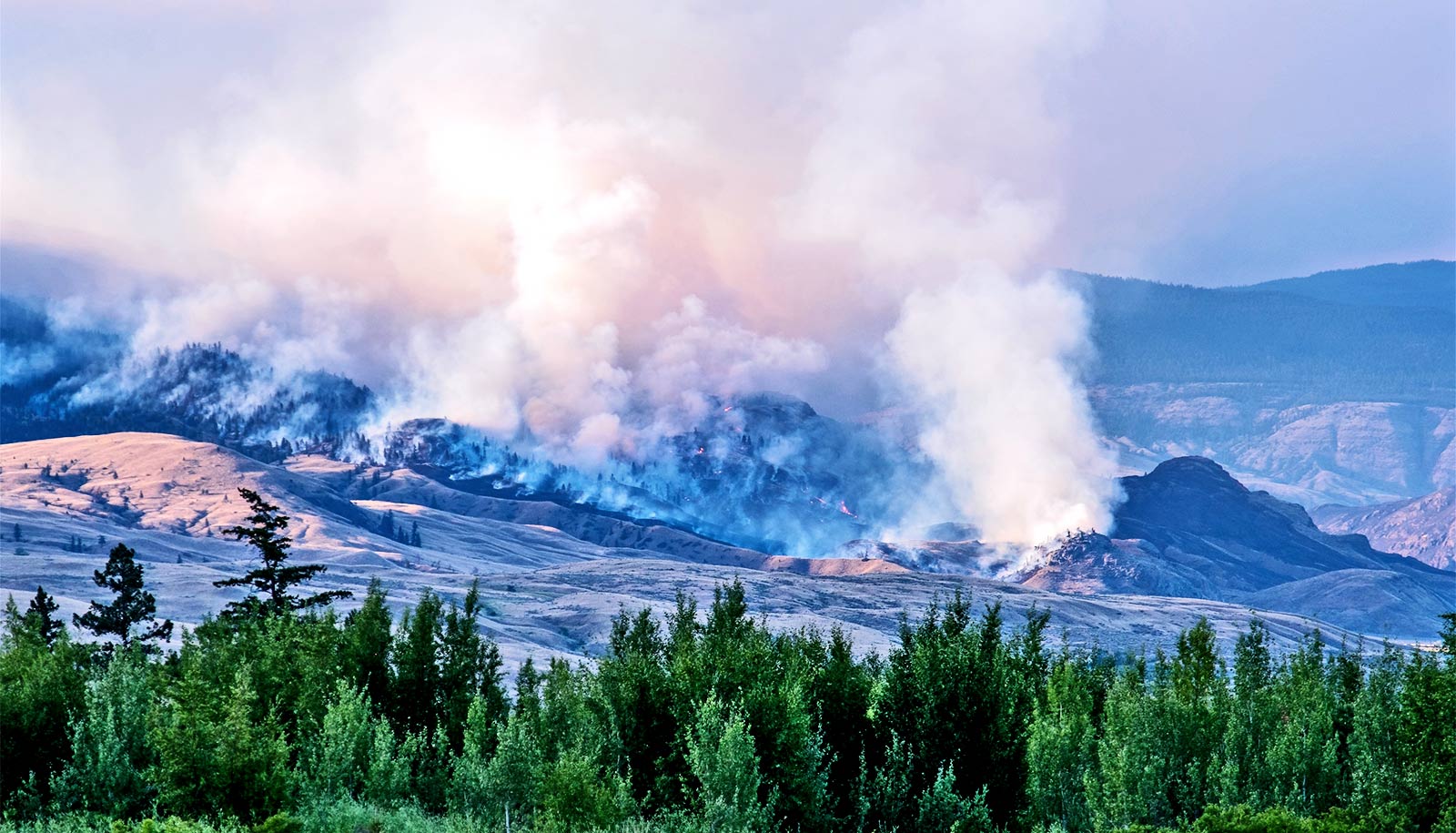Fire emissions from wildfires can contribute to cardiovascular disease hundreds of miles from the flames, according to new research.
The researchers say the risks are greater and more widespread than most predictive models show.
Spyros Pandis, a professor of chemical engineering at Carnegie Mellon University, warns that people downwind of a fire are not fully anticipating its possible effects on their health.
Wildfires and emissions
“The evidence suggests that these emissions are just as bad for our health as that of other combustion sources, such as vehicle and industrial emissions,” Pandis says. “The emissions from wildfires contain thousands of complex organic compounds, some of them carcinogenic.”
The emissions in question are biomass burning organic aerosols, which originate from burning plants, trees, and other organic matter. Researchers created a 3D model of biomass burning organic aerosols to track two types: primary organic aerosols and secondary organic aerosols.
Fires emit primary organic aerosols directly into the atmosphere in the particle phase and are mostly concentrated within a fire’s vicinity. Secondary organic aerosols consist of organic vapor emissions that condense in the particle phase after burning and spread out further.
Most computer models that track particle movement in the air after a fire track primary emissions and ignore secondary emissions.
‘600 miles away’
For the new model, the team entered data from across the US from three months of 2008, creating a set of predictions that they then checked against historic data from aerosol tracking networks and predictions from a model focused only on primary organic aerosols.
The researchers studied April, when controlled agriculture fires boosted emissions; July; and September, when wildfires were most common.
Taking secondary organic aerosols into account, the researchers’ model predicted significantly higher average concentration values of biomass burning organic aerosols than less-sophisticated models—66% higher in April and a little more than 100% higher in July and September. The researchers’ model was more accurate when they compared their work to actual measurements. They also showed that the secondary organic aerosols previously were underestimated.
“Atmospheric chemistry acts as a booster,” Pandis says, “producing additional particulate matter as the plume moves away from the fire one or two days later. The effects, of course, get smaller as one gets away from the fire, but it can remain significant up to 600 miles away—even if it’s no longer visible as thick smoke. This enhancement is stronger during warm sunny days.”
Wildfires decimated 8.8 million acres in the United States in 2018, on a sharp curve up from a little more than 2 million in 1985, according to the National Interagency Fire Service.
The authors say they hope that this research will help expand the public’s understanding of the severity of these wildfires and the importance of limiting them in the future.
The study appears in Atmospheric Environment.
Source: Nick Keppler for Carnegie Mellon University



